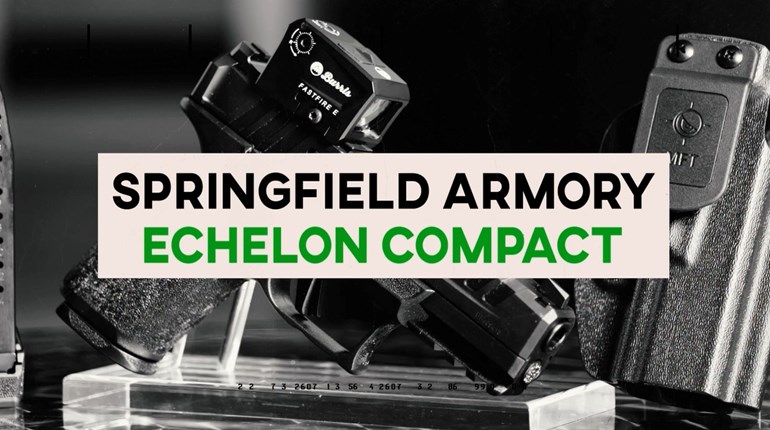
There’s a good reason why action shooters in Minor caliber divisions love the 9 mm round. The 125 Minor Power Factor allows light recoiling loads. Handloaders can launch a 124-grain bullet at 1,050 f.p.s. to provide a comfortable 130 PF. A 147-grain bullet at 880 f.p.s. makes 129 PF with softer, less snappy recoil than the 124-grain slugs. Unfortunately, those shooting factory loads miss out. Factory 9 mm loads have higher velocities and PFs will be in the 135 to 145 range. That’s more recoil than needed, and doesn’t aid match performance.
Barnaul’s recently-introduced subsonic 9 mm load can level the playing field for factory ammunition shooters. The Russian-made load features a 151-grain, bi-metal jacketed RN bullet in a steel case. Both are coated with zinc to lubricate and promote feeding. It claims 850 f.p.s. from a 4.7-inch barrel for a 128.5 PF. It was worth a look.

Since I was provided 100 rounds, a match was not doable—but function, accuracy and chronograph tests were. I selected three 9 mm guns I have shot in competition for years and accuracy tested and chronographed with many loads. I know what they will and won’t do. They consisted of a S&W M&P Standard with a 4.25-inch long, 1:10-inch twist barrel with adjustable iron sights, a 5-inch M&P C.O.R.E with a KKM 1:16-inch twist barrel and Trijicon SRO reflex sight and a Ruger PC9 Carbine sporting Tandemkross Eagle Eye fiber-optic sights.
I fired a few rounds with each gun on a 10-yard target to check point of impact, and prevent blowing up my chronograph. The recoil felt the same as my 147-grain 125 PF handloads. Checking ejection, the two pistols spit them out about 30 inches and 45-degrees rearward, while the PC9 tossed them 40 inches and 90 degrees—no different than my handload.
From my 25-yard sandbagged bench rest, I started the accuracy tests with the 4.25-inch M&P. This is a three-inch gun with its best loads, and the Barnaul was right there. The PC9 Carbine was a surprise. Even with iron sights the groups were a bit tighter than my best handloads with a reflex sight. The biggest surprise was the C.O.R.E.

My previous experience with this 1:16-inch twist barrel has been that 147-grain loads grouped into three to four inches. I felt the twist rate was too slow for heavier bullets, so I used 124/125-grain slugs for matches. But the groups I was getting with the Barnaul were quite close to my best lighter bullet handloads. For whatever reason, this barrel liked the 151-grain loads.
Chronographing was the last step. Barnaul claims 850 f.p.s. from a 4.7-inch barrel for a 128.3 PF.
The accompanying chart shows the 4.25-inch M&P didn’t make a 125 PF. The five-inch C.O.R.E. made it easily for both USPSA and IDPA. I had expected a larger velocity increase from the 16.2-inch barrel on the PC9 carbine, but it easily made PF for both organizations.
There were no malfunctions of any type from the guns, although upon cleaning them I noticed that the powder was pretty dirty (similar to most Russian-made rounds). It took a little more cleaning time, but not that much. Even with that, given the soft recoil and excellent accuracy, this is a viable option for factory ammunition shooters with 4.7-inch or longer barrels.
Accuracy and Chronograph Chart

Learn more at barnaulammo.com.
Read more: 4 Key Things To Do Before Your First Match


































